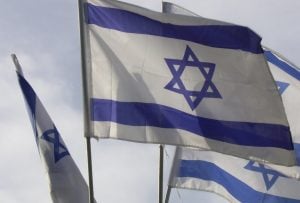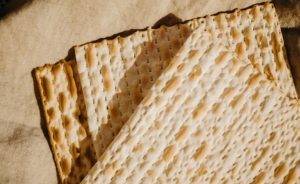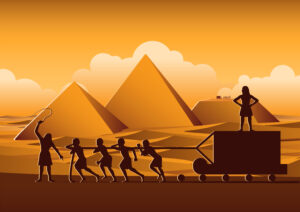As Jews, we know there are talismans, symbols and amulets that are said to bring in good luck, or at least keep evil away. In Jewish tradition, we believe that every person has a yetzer tov– good inclinations- and a yetzer hara– bad inclinations, similar to the concept of good and bad luck. In Judaism and the mystical Kabbalah, there is the use of different symbols to keep the yetzer hara away, which in a way is similar to good luck charms. Israeli charm jewelers have mixed up this ancient tradition and created stunning pieces of jewelry and home decor featuring these talisman. Although this is a rather short list, here is a list of good luck charms found in Judaism.
Hamsa
It was once common to have a hamsa amulet in one’s home and still is of those of Middle Eastern and North African decent, where the hamsa originates from. The symbol is depicted as an open right hand, often with an eye in the center of the palm and adorned with fish or other symbols of protection and luck. The hand can either be pointing up or down, fingers spread or close together, many believe even the smallest of details have an impact in the hamsa‘s protection. In Judaism, many connect the hamsa with the exodus from Egypt, as it says that “God took Israel out of Egypt with a strong hand and an outstretched arm”.

Ana Bekoach
The prayer of Ana Bekoach is one of the most powerful and spiritual prayers in Judaism. Throughout the poem written by Rav Nehunia Ben Hakannah, is the 42-letter name of God which is spread out along the seven lines, with only six words per line. The meaningful prayer is said during hard times with the hope that God will help us in anyway he can. In Kabbalistic terms, it is a prayer that is to remind us that while we are physically bound to Earth, our spirits should be and can be uplifted to go above and beyond. Ana Bekoach written on jewelry has mystical powers to it, said to keep the wearer safe while giving luck, guidance and strength.
Red String
Unsure of the exact history of the red string, what we do know is that the color red is supposed to keep the ayin hara– evil inclination- away. The Kabbalistic bracelet is often worn by celebrities following the traditional rules, where it is made of wool, tied on your left wrist with seven knots in it. These traditions are nice but not necessary as many also just choose to go with the color red on a string made of cotton, wool, or leather. Some say the most powerful place to get a red string is from the Tomb of Rachel, where the string is supposedly wrapped around the tomb seven times and is said to pass over the traits of Rachel to the wearier.

Evil Eye
Oddly enough, the jewelry and beads featuring an eye with a blue pupil and/or background is meant to ward off the Evil Eye, are also called Evil Eye jewelry. The open eye put on jewelry or wall hangings are meant to keep the yetzer hara– bad inclinations- away, as their is an eye constantly on the look out. The yetzer hara can only come when no one is looking. Evil Eye jewelry is constantly making an appearance in the fashion world, but also the Evil Eye is often found on hamsas, another talisman for protection.
Shema Yisrael
Shema Yisrael is one of the most famous Jewish prayers, it is the first one learnt as children and the last one said in our lifetimes, and is said on average twice a day during the morning prayers and before we go to sleep. The prayer of Shema marks the Jewish connection with G-d and that as Jews, we have chosen to take on all 613 commandments and Jewish unity. The prayer of Shema is also one of peace, that it puts a person at peace during the difficult times in their lives. People often put the Shema Yisrael prayer in their home, not only as a piece of artistic work, but also for peace in their home.

Mezuzah
Mezuzah jewelry is said to protect it’s wearer. In ancient times, people would wear the mezuzah as an amulet for protection and if they ever needed guidance. Today, most people wear mezuzah necklaces as a reminder of God or just because they like the Jewish symbol. Most mezuzah necklaces come with a blessing that have to do with protection such as Ana Bekoach or Shema Yisrael.

These Jewish good luck charms are not the same as a four-leaf clover or a rabbit’s foot, but rather, they come with a lot of meaning and history. All of these talisman, charms, amulets and so on, have been mentioned in ancient Judaism, and have all been used just as they are today- only with more modern styles. These pieces and prayers are not just for those who believe in the power behind them, but these are iconic symbols of Judaism made for everyone who wants to show off a little bit of their love of the religion. Even if you don’t think you believe, you never know what might happen.








